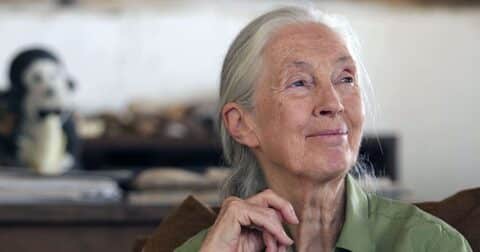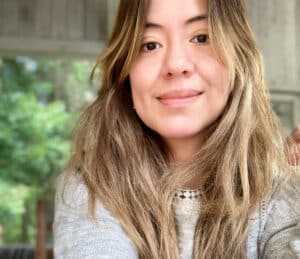Explainer
Animals Can Work Together, and Here Are a Few Notable Examples
Research•8 min read
Reported
Our improved understanding of animal behavior is a legacy of Jane Goodall’s work.


Words by Julieta Cardenas
When Charles Darwin first began researching animals in the wild, he and the animal researchers who followed in his footsteps believed that only humans were capable of using tools. Nearly a century later, Jane Goodall upended that theory. In the 1960’s, Goodall became the first to discover that chimps could make and use tools. Her discoveries are inextricably linked to her unique style of interacting with chimpanzees in their own habitats. This immersive fieldwork allowed her to uncover details about animals’ social complexity, intelligence and culture, transforming the field of ethology from that point forward.
Part of what made Goodall’s works so indelible is the striking images of her in the field that we have thanks to the National Geographic Society, which helped fund her work. The importance of what these images taught the public about the discoveries of Gombe is matched by their aesthetic brilliance, (much of the National Geographic film was shot by Hugo Van Lawick, a noted wildlife filmmaker and Goodall’s future husband.) And the representation of a young woman scientist did much to encourage other women to follow in her career footsteps.
Goodall first became interested in animal research as a child reading Tarzan in her hometown of Bournemouth, England. Her persistent desire to live in nature among wild animals led her to save the money she earned as a waitress to pay for her ship fare to Africa, where she stayed at a family friend’s farm in Kenya. There, she was told to look into the work of Louis Leakey, an archaeologist she was able to meet during that same trip. Leakey was interested in the behavior of chimpanzees, which he saw as a key to understanding early human behavior. He was impressed by Goodall’s curiosity and encouraged her to study chimpanzees, eventually becoming a lifelong mentor to Goodall.
Her notes were meticulous, as she immersed herself among the chimpanzees and documented her observations in great detail. Her handwritten data on chimpanzee life included details of how chimpanzees formed social groups, how they use tools, their mating habits as well as dominance, feeding and grooming behaviors. The practice of immersing herself among the animals in their day-to-day life was so striking in terms of the breadth and depth of discovery, that it paved a new path into the study of ethology. Today, data continues to be collected at Gombe National Park, but the existing data set housed at Arizona State University continues to be used to make new discoveries. For instance researchers have found that chimpanzees communicating improves their success when hunting. Another study finds that male chimps “mellow out” as they get older.
One particular photo of Goodall published in 1965 showed her reaching out to a baby chimp named Flint. The photo became iconic, as it captured the nature of human-chimp bonds, and introduced much of the public to this idea for the first time. But later, when she eventually attended Cambridge for her PhD (she remains one of the very few to attend Cambridge for a PhD without an undergraduate degree), she faced criticism for having named her study subjects, and for having attributed personality to them. “I didn’t give them personalities, I merely described their personalities,” she told the BBC in 2014.
Though the debate over how researchers should relate to their animal subjects persists to this day, the fact that animals have emotions is not, which is a credit to Goodall’s work. “Jane will often say how curious she found it that the scientific community was not necessarily accepting of the notion that animals are individuals, that animals have emotions,” Anna Rathmann, Executive Director of the Jane Goodall Institute tells Sentient. “Anyone who has spent time with an animal, whether it’s a companion animal, a dog, a cat, a bird, a tortoise, a horse, is likely to tell you from their own experience and their own observations that they do have emotions.”
The emotional discoveries were only part of Goodall’s research. Through observational studies and careful note taking, the ethologist was able to make significant discoveries. Not only do chimps use tools, Goodall revealed, but in fact they make them. The discovery felt like a revelation to Leaky, who wrote at the time: “now we must redefine ‘tool,’ redefine ‘man,’ or accept chimpanzees as humans.”
Since the 1960s, technology has made it possible to better record wildlife and study primate cognition. At Gombe alone there are 9 different ways chimps make and use tools and this behavior is taught. “Because it seems these patterns are passed from one generation to the next, through observation, imitation and practice–that is the definition of human culture,” said Goodall in a TED talk. Goodall has spoken on the similarities between chimpanzees and humans and describes the line separating the two species as “wuzy.”
Goodall describes in the same TED talk that chimps use verbal and gestural communication much in the same way humans do. “They kiss, they embrace, they hold hands. They pat one another on the back, they swagger, they shake their fists. The kind of things we do, and they do them in the same kind of context.”
Though Jane began as a scientist, today most of her time is dedicated to conservation. She founded her eponymous institute in 1977, and then after hearing about the effects of deforestation on chimp habitats from her colleagues in 1986, began shifting her attention to conservation work.
Projects include wildlife management and care and efforts to stop wildlife trafficking, as well as her well-known critiques of the impacts of industrial agriculture. In 1991 she convinced the oil company ConocoPhillips to partner with her to create the largest chimpanzee sanctuary in the African continent. “We like to say anywhere wild chimpanzee populations are found, the Jane Goodall Institute has a presence,” says Rathmann, including the Democratic Republic of Congo, Uganda and Tanzania.
Today, Goodall doesn’t want anyone to think of themselves as the next Jane Goodall. She would rather see people look at their own “extraordinariness, their own individuality,” says Rathmann. “When Jane talks about hope, it is not some fluffy puppies and daffodils — which we love — but it is a choice, a hard-fought decision,” says Rathmann, adding “an active choice everyday.”